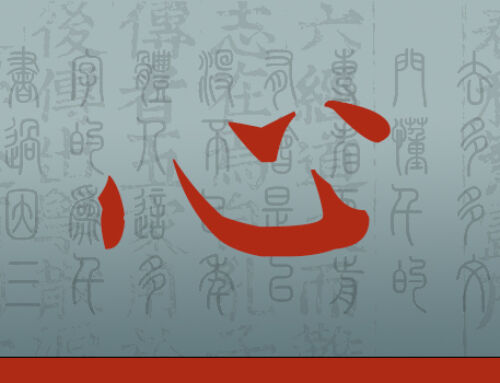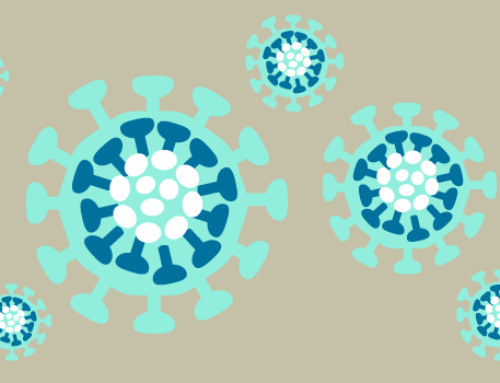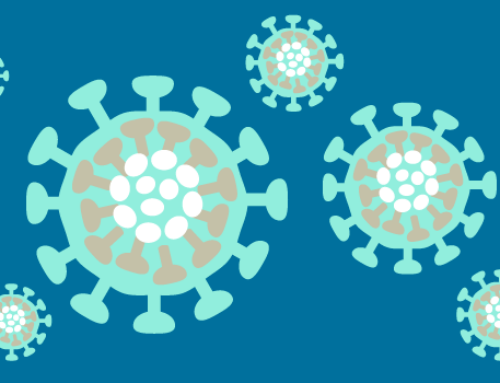By Zhang Jingyue
(1583-1640)
Translated by Heiner Fruehauf
National University of Natural Medicine, College of Classical Chinese Medicine
The flavor of Fuzi is pungent and sweet, and becomes extremely salty if immersed in brine. Its qi is very hot. This herb, therefore, carries within the energy of yang within yang. It is described as toxic. Its (toxic) effect is controlled by Renshen (ginseng), Huangqi (astragalus), Gancao (licorice), Heidou (black beans), Lüxijiao (green rhinozerus horn), Tongbian (human urine), Wujiu (Herba Stenolomae), and Fangfeng (siler). While stimulating movement, which generally tends to rise toward the surface, it is the nature of Fuzi to draw energy downward. It has the ability to enter all channel networks, and is therefore often likened to the effect of alcohol. Both can dispel deep-seated cold at the surface and the interior, serious counterflow problems, and severe shivers.
Fuzi warms the center, strengthens reproductive function, vitalizes the five zang organs, and draws escaping yang-qi back into the body. It can rid the body of a wide variety of symptoms, such as nausea and vomiting, severe gastrointestinal disorders characterized by relentless diarrhea, regurgitation of food, inability to swallow food, pain and bloating in the abdomen or epigastric region, loose stools, cramping of the extremities, eczema caused by cold pathogens, coldness in the stomach, roundworms, cold phlegm, abdominal pain radiating into the testicular region induced by cold, numbness caused by wind-damp, carbuncles and toxic lesions of a yin-cold nature, chronically weeping sores that are due to internal cold, separation of yin and yang, throat closure, yang deficiency, obstructed bowel movements and/or urination, irregular menstruation due to cold influences, and infantile convulsions. Fuzi can draw upflaring fire downward in a major way, and thus subdue symptoms of deficiency heat. It is a prime herb to help Renshen (ginseng) and Huangqi (astragalus) accomplish their goal, and makes an excellent companion to Baizhu (white atractylodes) and Dihuang (rehmannia). No matter whether the disease is at the surface or in the interior—as long as the pulse is feeble and has no spirit, and there are signs of qi deficiency with the absence of real heat, this herb should be used urgently and immediately.
Therefore Yu Bo (1438-1517) once said: “Fuzi has the capacity to bestow a fundamental quality of invigorating vitality, and an effect that can break through all engrained blockages. It can draw all qi tonic herbs deep into the twelve channel networks, and thus restore severely dissipated original yang. It can draw blood tonic herbs deep into the blood layer, and thereby moisten and nourish depleted original yin. It can draw diaphoretic herbs into the region of the pores, and thus drive out wind cold chronically lodged at the surface. It can, finally, entice warming herbs into the lower burner in order to eliminate deeply entrenched cold damp.”
Wu Shou (fl. 15th century), moreover, stated: “Fuzi is the most important herb for all types of disorders characterized by yin (cold). It must be used in all epidemic shanghan disorders that have progressed into one of the three yin stages (taiyin, shaoyin, jueyin), as well as all situations of internal cold, including patients with intense fevers—as long as the pulse is deep, Fuzi should be prescribed. It is especially pertinent that Fuzi is administered without fail to patients exhibiting a combination of cold extremities and feeble pulses. This herb has the power to push out yin and bring back yang, and thereby revive the forces of life and bring people back from the brink of death.”
In recent times the use of Fuzi in epidemic shanghan conditions of a yin nature may come to mind, but most doctors in the end don’t dare to prescribe it. Thus they wait until yin pathology has reached an extreme and yang is completely exhausted—when they use it then it is already to late! Moreover, if Fuzi is not prescribed in a shanghan situation with pre-existing internal cold, where the patient is cold inside and out, how can this kind of patient ever be rescued later? I commend to you that the words of these two masters represent the ultimate truth—you absolutely must heed them.
The only situation where extreme caution should be exercised is in pregnant women. Fuzi can have a very strong abortive effect. When combined with the juice of chives and inserted into the ears, it can cure deafness.
And how is it avoidable for any type of medicine to not have some kind of toxicity? Although many a materia medica’s jargon implies that “such and such an herb is toxic,” and “such and such an herb is non-toxic,” I am of the opinion that this is entirely not true, and that there is no medicine that is entirely without toxicity. Namely, hot materials contain heat toxins, and cold materials contain cold toxins. If any of them is used inappropriately, they will manifest a toxic effect in the body of the patient. This is the same with common food items used in everyday life: originally they represent something that can nourish the body, but when a particular one is used in excess or at the wrong time, they can also poison a person.This is all the more true for medicinal items, which by their very nature are not neutral in their flavor and effect. However, the degree of their toxicity varies, and their use is only temporary. Consider this point carefully!
© 2012 Heiner Fruehauf
Eine Beschreibung der therapeutischen Verwendung von Aconitum durch den Gelehrtenarzt der Ming-Dynastie Zhang Jingyue (1583-1640)
Von Zhang Jingyue
(1583-1640)
Übersetzt von Heiner Frühauf
National University of Natural Medicine, College of Classical Chinese Medicine
Deutsche Übersetzung Markus Goeke
Der Geschmack von Fuzi ist scharf und süß und wird extrem salzig, wenn es in Salzlake getaucht wird. Sein Qi ist sehr heiß. Dieses Heilkraut enthält daher die Energie des Yang im Yang. Es wird als giftig beschrieben. Seine (giftige) Wirkung wird kontrolliert von Renshen (Radix Ginseng), Huangqi (Radix Astragali Membranacei), Gancao (Radix Glycyrrhizae Uralensis), Heidou (Schwarze Bohnen), Lüxijiao (grünes Nashornhorn), Tongbian (menschlicher Urin), Wujiu (Herba Stenolomae) und Fangfeng (Radix Saposhnikoviae). Während es zwar die Bewegung anregt, die in der Regel die Tendenz hat, in Richtung der Oberfläche aufzusteigen, ist es die Natur von Fuzi, die Energie abwärts zu ziehen. Es hat die Fähigkeit, in alle Leitbahn-Netzwerke einzudringen und wird daher oft mit der Wirkung von Alkohol verglichen. Beide vermögen tief sitzende Kälte an der Oberfläche und im Inneren zerstreuen, sowie Probleme von ernster Gegenläufigkeit und starkem Zittern [Frösteln] zu behandeln.
Fuzi wärmt das Zentrum, stärkt die reproduktiven Funktionen, belebt die Fünf Zang-Organe und zieht entfliehendes Yang-Qi zurück in den Körper. Es kann den Körper von einer Vielzahl von Symptomen befreien, etwa von Übelkeit und Erbrechen, schweren gastrointestinalen Störungen charakterisiert durch unablässige Diarrhö, Regurgitation von Nahrung, der Unfähigkeit Nahrung zu schlucken, Schmerzen und Blähungen im Abdomen oder der epigastrischen Region, lockerem Stuhlgang, Krämpfen der Extremitäten, Ekzemen durch Kälte-Pathogene, Kälte im Magen, Rundwürmern, Kälte-Schleim, durch Kälte ausgelöste abdominale Schmerzen, die in die Hodenregion ausstrahlen, Taubheitsgefühle verursacht durch Wind-Feuchtigkeit, Karbunkel und toxische Läsionen von Yin-Kälte Natur, chronisch nässende Wunden aufgrund von innerer Kälte, Trennung von Yin und Yang, Rachenenge [Rachenstenose], Yang-Mangel, blockierter Stuhlgang und/oder blockierte Miktion, unregelmäßige Menstruation durch Kälteeinflüsse und Krämpfe bei Säuglingen und Kindern.
Fuzi hat die große Fähigkeit, aufwärts flammendes Feuer abwärts zu lenken. Es ist das wichtigste Heilkraut, um Renshen (Ginseng) und Huangqi (Astragalus) dabei zu unterstützen, ihr Ziel zu erreichen und ist ein exzellenter Begleiter von Baizhu (Rhizoma Atractylodis, weiß) und Dihuang (Rehmannia). Gleichgültig ob die Erkrankung sich an der Oberfläche oder im Inneren befindet – solange wie der Puls kraftlos und ohne Geist ist und es Zeichen von Qi-Mangel mit Abwesenheit von wahrer Hitze gibt, sollte diese Heilpflanze dringend und umgehend verwendet werden.
Daher sagte Yu Bo (1438-1517) einst: „Fuzi hat die Fähigkeit, eine grundlegende Qualität von belebender Kraft zu verleihen und eine Wirkung, die es vermag, alle tief verwurzelten Blockaden zu durchbrechen. Es kann alle Qi stärkenden Kräuter tief in die 12 Leitbahn-Netzwerke ziehen und folglich ein stark zerstreutes Ursprungs-Yang wieder herstellen. Es kann Blut stärkende Kräuter tief in die Blutschicht lenken und damit ein erschöpftes Ursprungs-Yin befeuchten und nähren. Es kann diaphoretische Kräuter in den Bereich der Poren ziehen und so Wind-Kälte verjagen, die sich chronisch an der Oberfläche eingenistet hat. Und schließlich ist es in der Lage, wärmende Kräuter in den Unteren Erwärmer zu locken, um tief verschanzte Kälte-Feuchtigkeit zu beseitigen.“
Wu Shou (fl. 15. Jahrhundert) merkte darüber hinaus an: „Fuzi ist die wichtigste Heilpflanze für alle Formen von Störungen, die durch Yin (Kälte) charakterisiert sind. Es muss bei allen epidemischen Shanghan-Störungen verwendet werden, die sich in eine der drei Yin-Schichten (Taiyin, Shaoyin, Jueyin) fortentwickelt haben, sowie in allen Situationen innerer Kälte, eingeschlossen Patienten mit heftigem Fieber – solange der Puls tief ist, sollte Fuzi verordnet werden. Es ist besonders angezeigt Fuzi zu verordnen, wenn der Patient eine Kombination aus kalten Extremitäten und einem kraftlosen Puls aufweist. Diese Heilpflanze hat die Kraft Yin zu vertreiben und Yang zurück zu holen und auf diese Weise die Lebenskräfte wieder zu stärken und Menschen vom Rande des Todes zu erretten.“
In jüngster Zeit mag Euch die Verwendung von Fuzi bei epidemischen Shanghan-Zuständen mit Yin-Natur in den Sinn kommen, aber letztlich wagen es die meisten Ärzte auch dann nicht, es zu verschreiben. Sie warten mithin bis die Yin-Pathologie ihr Extrem erreicht hat und das Yang völlig erschöpft ist – wenn sie es dann einsetzen, ist es schon zu spät! Darüber hinaus wird Fuzi nicht in einer Shanghan-Situation mit bereits vorhandener Kälte verschrieben, bei der der Patient innerlich und äußerlich kalt ist. Wie sollte solch ein Patient später jemals noch gerettet werden können? Ich bestehe aufs Dringlichste darauf, dass die Worte dieser beiden Meister die ultimative Wahrheit darstellen – Ihr müsst sie unbedingt beherzigen.
Die einzige Situation in der äußerste Vorsicht geboten ist sind schwangere Frauen, denn Fuzi kann eine sehr starke abortive Wirkung haben. Wird es mit Schnittlauchsaft kombiniert und ins Ohr geträufelt kann es Taubheit heilen.
Und wie wäre es vermeidbar für jegliche Art von Arznei nicht irgendeine Form von Giftigkeit zu besitzen? Obwohl der Jargon vieler Materia Medicas impliziert, dass „diese und jene Heilpflanze giftig sei“, und aber dass „diese und jene Heilpflanze ungiftig wäre“ so bin ich der Überzeugung, dass dies völlig falsch ist, und dass es keine Arznei gibt, die ganz und gar ungiftig ist. Namentlich enthalten heiße Substanzen Hitzegifte und kalte Substanzen enthalten Kältegifte. Wenn eine von ihnen in unangemessener Weise eingesetzt wird, werden sie giftige Wirkungen im Körper des Patienten hervorrufen. Es ist dasselbe wie mit den alltäglichen Nahrungsmitteln: eigentlich stehen sie für etwas, das den Körper nähren kann. Wird jedoch ein bestimmtes Nahrungsmittel im Übermaß oder zur falschen Zeit genossen kann es eine Person auch vergiften. Dies trifft umso mehr auf Arzneien zu, die ihrer Natur nach nicht neutral in Geschmack und Wirkung sind. Allerdings variiert ihr Grad an Giftigkeit und ihre Verwendung ist zeitlich begrenzt. Beachtet diesen Punkt sorgfältig!
© 2012 Heiner Frühauf
© 2012 Übersetzung Deutsche Markus Goeke
ADDITIONAL RESOURCES
Watch this video of Heiner Fruehauf touring an aconite (fuzi) processing facility in Jiangyou, the only location in China where the crop is grown and processed using traditional methods.
For more information about direct trade and sustainably sourced and processed fuzi (aconite), please visit our friends at classicalpearls.org.
Für mehr Information zu Aconitum und anderen Kräutern oder Rezepturen besuchen Sie bitte unsere Freunde unter classicalpearls.org.










Hello Mr. Freuhauf,
I have read all of your aconite papers and articles on fu zi and really appreciate the insight they have given me. That said, I have a lingering question I am hoping you can answer. I am having trouble reconciling Fu zi’s actions of bringing the yang back to the source with its pungent quality. As I understand it, the pungent quality has an upward and outward movement – directing chi towards the surface of the body. Zhang Jingyue mentioned in your translation above that one of the requirements for using Fu Zi is that a patient must have a deep pulse. This seems to go along with its pungent quality, especially if the pulse was deep but not weak- like the yang is stuck deep within and needs to be guided out to the surface. Fu zi’s therapeutic action of dispersing wind-cold pain in the channels also makes sense here with the idea that Fu zi is bringing the yang from the ming men into the channels to warm them and disperse pain caused by cold accumulating there. How can you explain, that it also has an inward drawing effect. My idea for this is that Fu zi alone does not have an inward effect but when combined with large amounts of Gan cao/Zhi gan cao, which is thick and sweet, the pungent aspect is neutralized and so the heat is contained in the ming men. So where Fu zi starts in the Ming Men and moves upwards and outwards on its own, with a lot of Zhi gan cao, it starts in the ming men and then is contained there. Thank you very much for any insight you have on this. Allyson Nevard, student of Sharon Weizenbaum.
This is an excellent question, Allyson! Perhaps the most succinct way to answer your inquiry from a classical perspective is the fact that in the Tangye jing (Decoction Classic), a recently rediscovered precursor to the Shanghan lun, Fuzi is classified as “water within wood”–a substance that does have the most descending and storage promoting effect within a group of overall pungent and dispersing medicinals including Gui (cinnamon), Jiang (ginger), Xixin and Chuanjiao. It is typical for the constitutionally oriented classical approach that even the most overtly pungent and dispersing of these substances, Guizhi (“wood within wood”), is still regarded as an herb of great alchemical stability and suitable for long-term consumption, because it contains an anchoring effect within its overall outward and dispersing nature. While many classical formulas utilized Fuzi for its “wood quality” meridian opening and anti-pain effect (i.e., Guizhi Shaoyao Zhimu Tang), the 19th century Huoshen (Fire Spirit) School of Sichuan herbalism began to zero in on the “water quality” of Fuzi by underscoring a classical truth encoded in the formulas of the Shanghan lun: in lower amounts (6-12g), Fuzi and Chuanwu warm and open the channels, while larger amounts (15-120g) enhance the plant’s storage potential by directly enhancing the fire of mingmen.